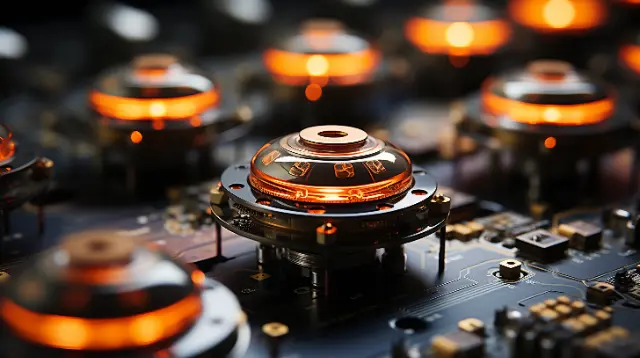What’s the Difference Between Vibration Sensors?

Introduction: Vibration sensors play a crucial role in various industries and applications, enabling the detection and monitoring of vibrations in machinery, structures, and systems.
They are invaluable in identifying potential faults, ensuring operational efficiency, and preventing catastrophic failures.
However, the market offers a wide range of vibration sensors, each designed to meet specific requirements. In this article, we will delve into the differences between various types of vibration sensors, highlighting their features, applications, and benefits.
Accelerometers: Accelerometers are one of the most common types of vibration sensors. They measure acceleration forces along different axes, allowing the assessment of vibration levels. Accelerometers can be further categorized into piezoelectric, piezoresistive, and capacitive accelerometers, each employing different principles to convert mechanical vibrations into electrical signals.
Piezoelectric accelerometers: These sensors use piezoelectric crystals that generate voltage proportional to the applied acceleration. They are widely used due to their high sensitivity, wide frequency range, and ruggedness.
Piezoresistive accelerometers: Based on the piezoresistive effect, these sensors measure changes in resistance caused by mechanical strain. They offer excellent linearity, stability, and low noise characteristics.
Capacitive accelerometers: These sensors employ variations in capacitance resulting from displacement caused by vibration. They are highly accurate and provide excellent frequency response.
Velocity Sensors: Velocity sensors measure the rate of change of displacement per unit of time. They are effective in monitoring low-frequency vibrations and are particularly suitable for detecting unbalance, misalignment, and bearing faults. The most commonly used type of velocity sensor is the seismic velocity sensor, which utilizes a moving coil or magnet to measure the velocity of the seismic mass.
Proximity Probes: Proximity probes, also known as eddy current sensors, are used to measure the proximity or displacement of a target surface. They are commonly used in rotating machinery, such as turbines and generators, to monitor shaft vibration and position. Proximity probes offer high accuracy and are capable of detecting both static and dynamic displacements.
Optical Sensors: Optical sensors, including laser Doppler vibrometers and fiber optic sensors, utilize light to measure vibrations. Laser Doppler vibrometers measure the velocity of the vibrating surface by analyzing the frequency shift of a laser beam reflected off the target. Fiber optic sensors, on the other hand, utilize the interference or intensity modulation of light to detect vibrations. Optical sensors offer high precision, non-contact measurement, and immunity to electromagnetic interference.
Strain Gauge Sensors: Strain gauge sensors measure strain or deformation in materials subjected to external forces. By affixing strain gauges to structures or machinery, vibrations can be indirectly measured by monitoring the strain changes. These sensors are commonly used in structural health monitoring, fatigue analysis, and modal analysis.
Conclusion: Vibration sensors play a vital role in various industries, providing valuable insights into the condition and performance of machinery and structures. Understanding the differences between various types of vibration sensors is crucial in selecting the appropriate sensor for a specific application. Whether it's accelerometers, velocity sensors, proximity probes, optical sensors, or strain gauge sensors, each type has distinct characteristics and advantages. By considering factors such as frequency range, sensitivity, accuracy, and environmental conditions, one can choose the most suitable vibration sensor to ensure effective monitoring and maintenance practices, ultimately leading to improved reliability and productivity.
Replies
-
 Vijay Khatri
Vijay KhatriAn accelerometer measures a quality of acceleration, not necessarily vibration. But vibration sensors, which measure a quantity of acceleration and are therefore a type of accelerometer, are by definition accelerometers. A vibration sensor typically contains a piezoelectric crystal element bonded to a mass.
-
 Ramani Aswath
Ramani AswathThis version has some more info:
-
 Addy smith
Addy smithThere is no real Difference But Older vibration sensors sensed position or velocity. Newer ones tend to use a MEMS accelerometer to detect vibrations. Accelerometer-based vibration sensors often capture acceleration data at a high rate. The built-in DSP uses a bandpass filter to eliminate the very high-frequency noise and to eliminate the low-frequency accelerations that are of little interest when it comes to detecting vibrations. Here it is the low-frequency accelerations that are of primary interest. When it comes to detecting acceleration, the vibrations are just noise that are best eliminated at the source.
You are reading an archived discussion.
